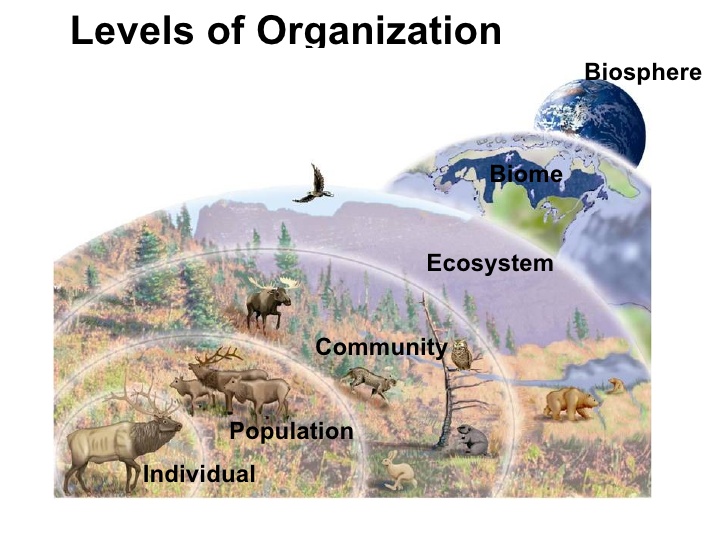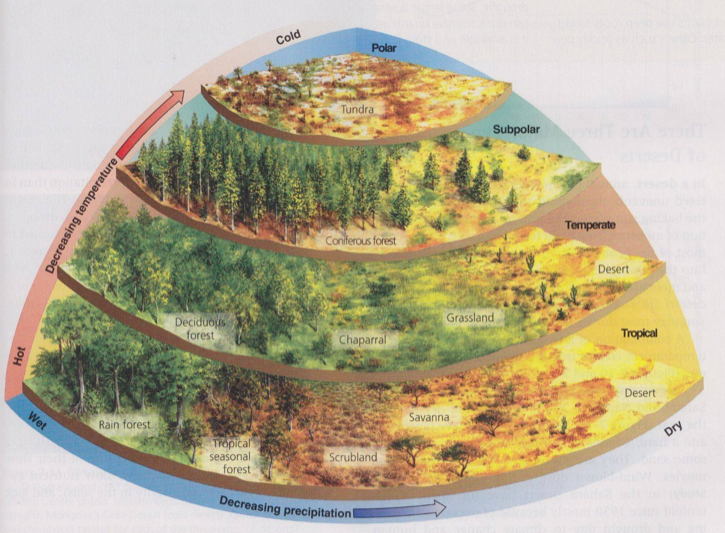How do biomes affect humans?
1 Answer
Biomes affect humans in multiple ways.
Explanation:
A biome is the term used to describe a community of flora and fauna. A biome is larger than an ecosystem.

The biome we live in determines the types of animals and plants we will interact with. The building materials available to us, the foods we can find, grow, and hunt, the clothing we need to use, and etc are all determined by the biome we inhabit (if we ignore trade and commerce with those inhabiting other biomes).
In the image below, if we move towards the left, the biome receives more precipitation. If we move towards the top, the temperature of the biome drops.

For example, if you live in the dry, tropical desert which receives very little precipitation and is very hot, you might spend your days sleeping or doing activities that require very little energy, and you might work at night mainly because it's cooler. You likely wouldn't wear a lot of clothes because it's so hot, and finding or obtaining enough water would be one of your main concerns.
If you lived in a grassland rather than a forest biome (tropical, deciduous, or other), you are going to have far fewer trees available for building materials and those trees will be much smaller than the ones available in areas with more precipitation.
The types of diseases and injuries you can contract will also differ. You are not going to worry about hyperthermia in the tundra. Bacteria that thrive in moist, warm places are not going to exist in dry areas like deserts or very cold places like the subpolar biome.
The types of food you consume will depend on the flora and fauna around you. Fruits and vegetables are challenging to grow in colder climates or in climates with little rainfall. Thus those in the desert and the polar biomes will likely consume more animal matter than those in the rainforest, where there are more fruits to be found.
Many of these examples above are not so straight forward due to commerce, trade, and technology. For example, those living in the deserts of Arizona are able to go to their local grocery store and purchase fruits and vegetables from around the world. They're able to irrigate their gardens and grow foods that would not otherwise be found in a desert.

